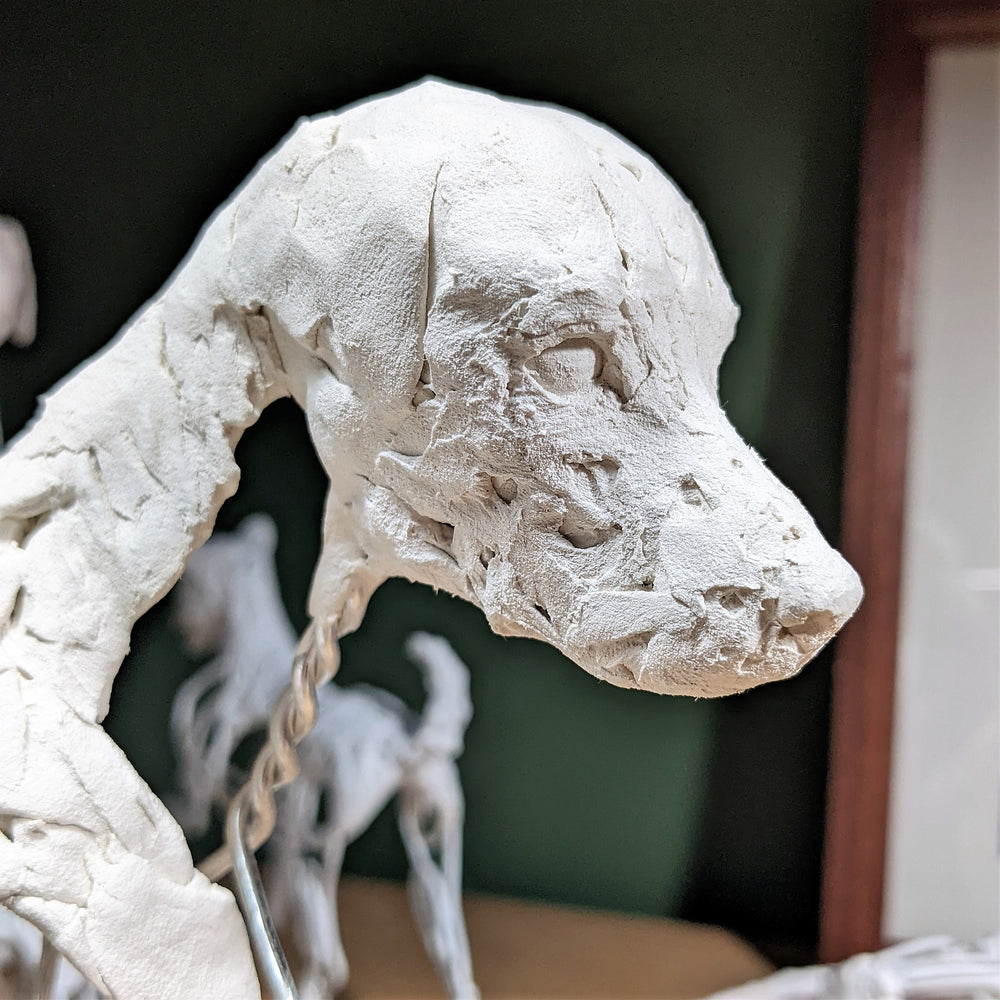
Disclosure: This post contains some affiliate links. I may earn a small commission at no extra cost to you, supporting my blog and content creation. Thank you!
---
La Doll clays by Padico have gained a well-deserved reputation for their high quality, and professional doll makers worldwide swear by them. As someone who has extensively used Creative Paperclay, I was eager to test La Doll's Premier and Premix clays to see how they stack up.
Padico offers 3 types of La Doll clay:
- La Doll - a stiff clay
- Premier - a softer version of La Doll
- Premix - a mix of the two

In contrast to Creative Paperclay (CPC), which is paper-based, La Doll clays are lightweight stone clays. Although they are water-based and non-toxic like CPC, they contain pumice, giving them a very fine clay body.
Like CPC, La Doll clays dry hard, allowing for sanding, carving, and painting. Surprisingly, they are also lightweight, much like their CPC counterpart.
Despite these similarities, there are significant differences:
Texture
La Doll Premix/Premier
- Offers a very smooth yet firmer texture than CPC, with Premier being softer than Premix.
- Working with Premix can be challenging due to its stiffness, making it difficult to smooth over an armature.
- Both types hold detail exceptionally well.
Creative Paperclay
- Features an almost creamy consistency, though not as smooth as La Doll.
- Its slightly "grippy" texture enables diverse gestural work and detailing.
- Thanks to the tiny fibers, it holds up better when lots of water is added, unlike La Doll clays, which tend to dissolve.
Strength
La Doll Premix/Premier
- Generally, La Doll clays are stronger than CPC, though their strength varies.
- La Doll is highly resistant to dents from rough handling but can be unforgivingly brittle on a larger scale.
Creative Paperclay
- CPC may dent more easily when handled roughly, but its flexibility, similar to softwood, makes it more forgiving once dry.
Adhesion
La Doll Premix/Premier
- Premix, more than Premier, struggles to adhere to other materials, necessitating more effort when attaching to armature materials like Styrofoam.
- This problem also arises when adding new clay on top of dried clay.
Creative Paperclay
- CPC has no adhesion issues, easily attaching to any armature materials, including itself.
Although both clays are strong, lightweight, and suitable for artists, I find myself gravitating more towards Creative Paperclay for two primary reasons:
- I appreciate the freedom to work in a gestural way, particularly in the early stages of the sculpture.
- The adhesion issue with La Doll clays was significant enough to cause frustration, making the sculpting process more challenging.

I can see how Premix and Premier would excel in small-scale work, but when scaling them up, I find myself ultimately annoyed. Ultimately, the decision comes down to your preferred working style and specific requirements.
Where can I get mine?!
If you want it without a fuss Amazon carries La Doll Premier. You can generally buy the La Doll clays from craft stores, but it can be very hit and miss, especially here in Canada. Premix seems to be harder to find than Premier, but you can get both directly from Japan using Padico’s online shop.
Choose Quality
Regardless of which air dry clay you choose, always ensure you’re selecting the highest quality to make your work last a long time. Experimenting with different types will help you understand your preferences and may even inspire you to push your creative limits.
What's Next?
Master the art of armature: the foundation for your air dry clay sculpture
Uncover the 5 differences between air dry clay and ceramic clay

